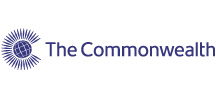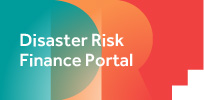Search New
Explore Funding
Filters
Filter your search by checking and unchecking the boxes below.
Before or After the disaster?
Own or Transfer the risk?
Instrument type?
Instruments Available
The ADB Contingent Disaster Loan which is part of their policy-based lending, is a loan provided by the ABD which is linked to a disaster.
A key feature of Contingent Disaster Financing is that it supports essential policy reforms to strengthen disaster preparedness that are to be completed before a natural disaster occurs. Once a CDF is approved for a country, it remains active until a disaster occurs. The country can then quickly access the approved financing to help relieve fiscal constraints for urgent relief and recovery efforts and avoid disruptive reallocations from priority budget programs.
The ADB Emergency Assistance Loan is a standard emergency assistance loan provided by the ADB.
The ADB Emergency Assistance Loan is a standard emergency assistance loan provided by the Asian Development Fund (ADF), which provides assistance to ADB’s lower-income developing member countries.
The ADB Normal Asian Development Fund (ADF)/Ordinary Capital Resources (OCR) development loan is a standard development loan provided by the ADB.
AfDB Emergency Liquidity Facility (ELF) is a short-term emergency finance support instrument. This US$1.5 billion facility provides financial support to eligible clients in exceptional cases, including disasters. Proposals for the use of the resources will be considered by the AfDB Board within ten working days.
AfDB Long-term Relief Assistance Operations offer long term nature loans for rehabilitation and reconstruction operations that aim to repair the damage caused by natural or man-made disasters. For instance, repairs and reconstruction of damaged infrastructure and equipment, assistance in the revival of economic activities and social services, rehabilitation or reconstruction of roads, bridges, water and sewerage systems, schools, hospitals, or industrial and agricultural complexes. The focus is to bring economic and social infrastructures back to pre-disaster levels. These operations would also include preparedness activities that enable a country to forestall or prepare itself to better withstand emergency situations.
The Exogenous Shock Policy-Based Loan is an instrument to provide resources for financing needs that arise from external and natural hazards shocks that have a significant economic and social impact.
Loan of up to Up to USD 750,000 automatically provided to all CDB borrowing member countries for immediate disaster response.
Loans provided to Red Cross/Crescent National Societies (rather than governments) for emergency relief and start-up response to sudden, slow-onset or imminent disasters.
Application Guidelines: https://media.ifrc.org/ifrc/wp-content/uploads/sites/5/2020/07/20200511_DREF_Guidelines_ONLINE-_OPT_FINAL-1.pdf
Medium-term financing for protracted balance of payments (BoP) problems. The Extended Credit Facility (ECF) provides financial assistance to countries with protracted balance of payments problems. The ECF was created under the Poverty Reduction and Growth Trust (PRGT) as part of a broader reform to make the Fund’s financial support more flexible and better tailored to the diverse needs of low-income countries (LICs), including in times of crisis. The ECF is the Fund’s main tool for providing medium-term support to LICs.
Longer term for serious medium-term balance of payments problems because of structural weaknesses that require time to address, the IMF can assist with the adjustment process under an Extended Fund Facility (EFF).
The global financial crisis highlighted the need for effective global financial safety nets to help countries cope with adverse shocks. A key objective of recent lending reforms was to complement the traditional crisis resolution role of the IMF with more effective tools for crisis prevention. The Precautionary and Liquidity Line (PLL) is designed to flexibly meet the liquidity needs of member countries with sound economic fundamentals but with some limited remaining vulnerabilities which preclude them from using the Flexible Credit Line (FCL).
The Rapid Credit Facility (RCF) provides rapid concessional financial assistance with limited conditionality to low-income countries (LICs) facing an urgent balance of payments need. The RCF was created under the Poverty Reduction and Growth Trust (PRGT) as part of a broader reform to make the Fund’s financial support more flexible and better tailored to the diverse needs of LICs, including in times of crisis. The RCF places emphasis on the country’s poverty reduction and growth objectives. No programme-based conditionality
The Rapid Financing Instrument (RFI) provides rapid financial assistance to all member countries facing an urgent balance of payments need. The RFI was created as part of a broader reform to make the IMF’s financial support more flexible to address the diverse needs of member countries. The RFI has replaced the IMF’s emergency assistance policy and can be used in a wide range of circumstances.
Provide longer-term financing to strengthen economic resilience and sustainability by (i) supporting policy reforms that reduce macro-critical risks associated with climate change and pandemic preparedness, and (ii) augmenting policy space and financial buffers to mitigate the risks arising from such longer-term structural challenges.
The Standby Credit Facility (SCF) provides flexible financial assistance to low-income countries (LICs) with short-term balance of payments needs. The SCF was created under the Poverty Reduction and Growth Trust (PRGT) as part of a broader reform to make the Fund’s financial support more flexible and better tailored to the diverse needs of LICs, including in times of shocks or crisis.

